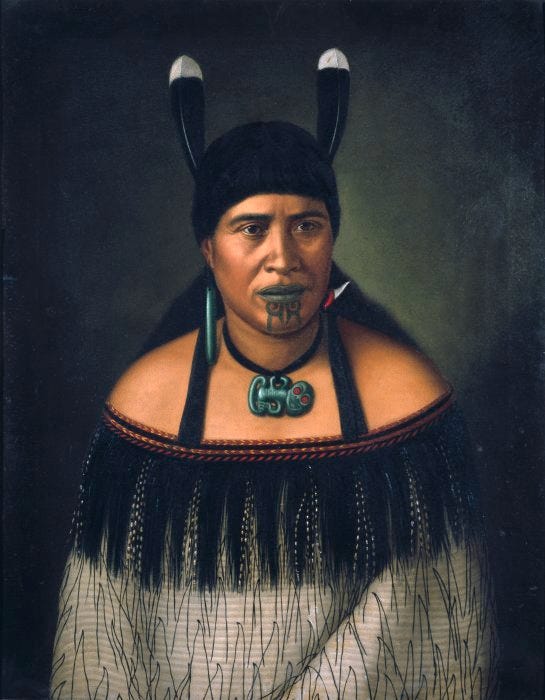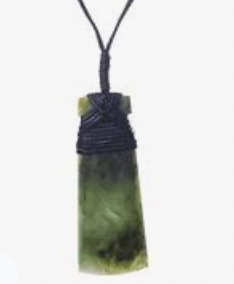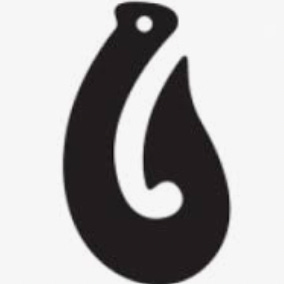
Pounamu is the Māori name for a hard green coloured stone found in New Zealand. Some green stones sold in souvenir shops are sourced from overseas, in which case it is simply called greenstone. If a stone is called pounamu, then it is sourced from the South Island of New Zealand.
Some, but not all pounamu is jade. Jade is usually formed from jadeite (sodium aluminium silicate) or nephrite (calcium magnesium silicate). Jade is mostly found in Myanmar. Nephrite is found in Europe, British Columbia, Australia and New Zealand. New Zealand nephrite has varying amounts of iron and a range of shades and translucency. Almost all pounamu deposits are nephrite and are found only in the South Island. There is no jadeite in New Zealand. Two types of pounamu are used for carving, nephrite jade and bowenite (a type of serpentine).
Pounamu stone comes from ophiolites, or slices of deep ocean crust and part of the mantle. When the deep mantle rocks and the crustal rock are heated, pounamu is formed. There are two Ophiolite Belts in New Zealand:
Dun Mountain Ophiolite Belt~ runs along the western Southland and Fiordland
Southern Alps Pounamu Ultramafic Belt in the Haast Schist ~ erodes to the southern West Coast rivers and beaches.
Typically pounamu is found in rivers and beaches where it has been transported due to erosion from the mountains. Places where pounamu is found are: Anita Bay near Milford sound, rivers in the South Island, West Coast, Fiordland, Southland, and Nelson. Pounamu fossicking (recreational prospecting) is allowed in designated areas of the West Coast of the South Island as long as it can be carried unaided. It is illegal elsewhere.
Here are the different types of pounamu as it is known by the Māori terms based on colour, inclusions and translucence:
Nephrite:
inanga ~ pearly white or grey green translucent to opaque~ inanga means whitebait
kawakawa ~ rich dark green with dark flecks or inclusions~ named after the kawakawa tree
kahurangi ~ (rarest variety) highly translucent vivid light green with lighter streaks which look like clouds and free from flaws or dark spots ~ kahurangi means high ranking person
Bowenite Serpentine:
tangiwai ~ translucent like glass but in a wide range of shades~ tangiwai means “the tears that come from great sorrow” and refers to a Māori legend of a lamenting woman whose tears turned to stone
Other types of pounamu based on colours and inclusions:
totoweka ~ small reddish dots or streaks. Named after the weka, a flightless bird
kōkopu ~ olive green speckled with dark spots. Named after a fish
kakotea ~ streaky dark green with black spots
flower jade, or picture jade ~ cream yellow or brown inclusions
The South Island of New Zealand was known to the Māori as Te Wai Pounamu, (the land of Greenstone Water), or Te Wahi Pounamu (the Place of the Greenstone). To the Māori, pounamu is a taonga, which means treasure. It was an important part of trade between the South Island Ngāi Tahu tribe and other New Zealand tribes.
Pounamu was carved into toki (adzes) whao (chisels), whao whakakõka (gouges), ripi pounamu (knives), kākā poria (leg rings for captive birds). Other uses were scrapers, awls, hammer stones, drill points, fishing hooks, lures, spear points, pendants and cloak pins.
Adz blades that were made from pounamu were even preferred over metal tools once they were introduced. After the pounamu tools lost their usefulness, they were reworked into hei tiki, or human figures worn as pendants. A hei tiki increases in mana (spiritual power) as it is passed from one generation to another. Because these hei tiki were so important, they were given as gifts to seal agreements between tribes. Peace was ensured by the exchange of valuable carved heirlooms as a tautau pounamu (a door of greenstone) that may never be broken.
Pounamu was worn suspended from thin leather or plaited flax so that it presents between the two collarbones above the chest. If it is not worn very regularly, it can be stored in a leather or felt pouch. A very light smear of oil in the pouch will enhance the carved pounamu with a beautiful gloss.
Pounamu has many meanings stemming from rich Māori mythological beliefs. It can symbolise a bond with ancestors, a connection with the natural world, or it can represent different attributes.
Carved shapes and their meanings
toki ~ adze ~ determination, control, strength, focus and hope
koru ~ fern~ new life, new beginnings, hope, renewal, rejuvenation, personal growth
hei matau ~ fish hook ~ connection to moana (ocean), good luck and safety while travelling
tiki hei ~ human form ~ symbolises strength and ancestral mana or prestige
pikourua ~ twist ~ means bond between friends, family or loved ones
manaia ~ a guardian ~ consists of a head of a bird body of a man, and tail of a fish ~ represents the sky, ocean, earth; or birth, life, and death











I am very fond of Pounamu.
I love the green color of the stone which comes
in many shades. Visiting New Zealand I was fascinated by the beautiful carved shapes and their meaning 👍🥰